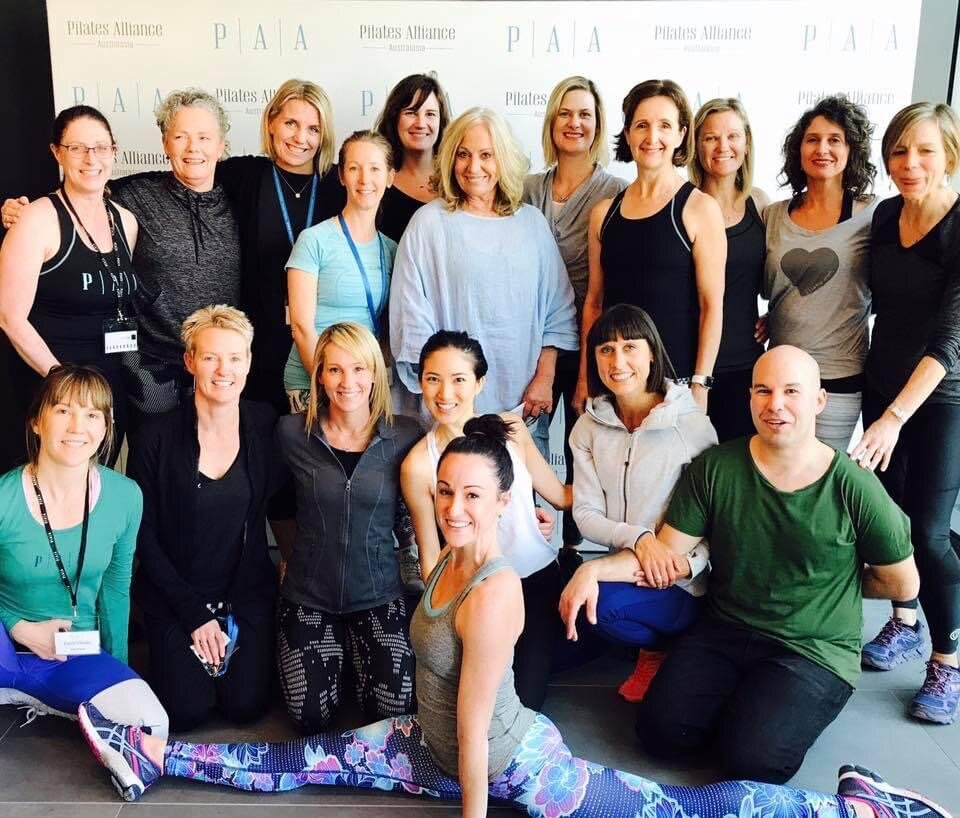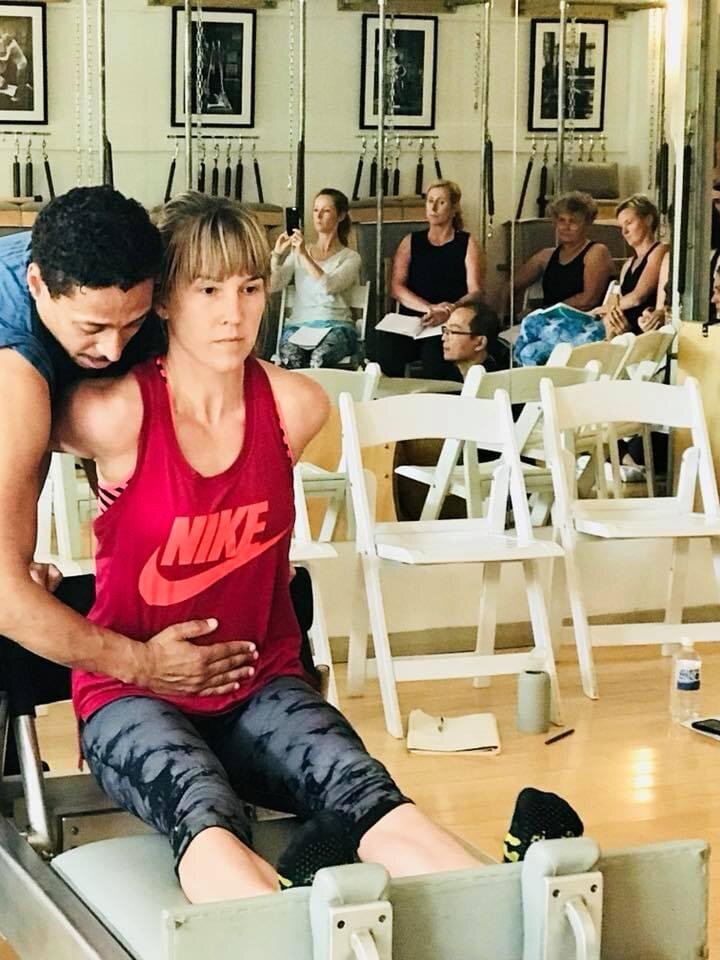It’s getting cold.
The sun is setting earlier.
The layers are coming out and on in full force.
We seek comforts foods, comfort drinks and comfort activities… hello couching!
We can all start turning a little bit Cranky Bear in hibernation mode (anyone who has a small child/ren will know exactly who I am referring to in the Jingle Jangle Jungle).
So understandably we start to want to retreat to where it’s warm, dry, familiar and comfortable.
But change doesn’t happen from comfort.
We could easily go about our business with our head in the sand, day in and day out.
But if you want growth or expansion or difference in your life, then that doesn’t start with the change of seasons, that starts with you.
Fast forward 6 months. What will you be doing differently? How will you be moving? What will you be excited for? What will your days be filled with?
Will you be grinding, busy, ignoring pain points, tired and grumpy?
Or will you be stronger, energetic, mindful, with less pain and more joy?
Maybe you’re thinking, holy shit, I just want to get through today, let alone think about what I’m going to be doing half a year from now?
Maybe you’re thinking, I don’t do winters, I. Just. Can’t. Even. Deal. (Especially in Melbourne town amiright?!)….so I’m not going on some mad fitness frenzy when I have zero motivation.
Well, Pilates is not a fitness frenzy, it’s not a quick fix, it’s the long game, it’s the foundational work that sets up a well oiled machine. Just like planting a beautiful lily bulb in winter to flower in summer, Pilates teaches you the basis upon which we can grow and evolve to accomplish more of what we are capable of, sometimes you just have to prove to yourself that it’s within you.
For example…
Maybe you want to do your first triathlon next summer. You might think it’s too cold to be out in the ocean swimming, but you could be in that Pilates class working on your endurance, your core strength and practicing how you breath through exercises.
Maybe you love the social tennis games you play with your girlfriends on balmy summer evenings, but you don’t love the debilitating knee pain that pops up for 3 days every time you play. Go get yourself into some Pilates class this winter, so you can work on strengthening and lengthening the muscles that support the knee
Maybe you love long afternoons on the beach with the kids and family friends, but the thought of all the carrying of toys/towels/snacks, walking through sand, setting up tents, sends dread through your bones and back! Go and learn the Pilates techniques to alleviate tight shoulders and backs, go and build the Pilates strength in your muscles so lifting kids and kids toys and sand walking becomes a breeze, a sea breeze ;-).
When the physical is hard and tiring and draining, we either end up resenting it or ignoring it and retreating. Either way, that builds the negative feelings and we are less likely to do them. And that can be a joy sucker!
But if triathlons, tennis and beach days aren't your thing, here are 5 other reasons you should get into Pilates this winter:
1)Beat the Springtime-gym-junkies-challenges. You know the ones… ‘quick, don’t delay, summer is around the corner, get started on your bikini body now!’ Eye roll. I hate that stuff. But I used to do that stuff. When we go on drastic fitness frenzy’s and /or drastic diets, sure it might work to show us some noticeable results in the short term, but there’s a reason it never lasts long term. They are never about you and your body and your needs. No point in mimicking Jo Blow’s Keto-loving, Cross-Fitting goals when she is nothing like you. What works for one person, won’t be the answer for someone else. Start working on your goals, your body and your pain points now, not when the local gym is putting on a Spring special.
2) Get warm! Pilates in renowned for working from the inside out, literally your organs will get a ‘massage’ in a good Pilates class. With all that organ moving, blood pumping, muscle squeezing, you will feel warmer in no time. There is one particular exercise done near the beginning of every class called The 100’s, I promise you if you do this exercise the way it was intended, you will be striping off your jumpers and layers asap! Read more about it here.
3) Get happier :) You’ve heard it before, but exercise gives you a flood of endorphins to the brain ! It’s the feel good drug, it will literally change the chemicals in your brain. It will brighten your mood, change your outlook on what’s hard, you will have a stronger believe in yourself that you can do difficult things. Pilates is exactly this…do hard things in a Pilates class and you will see you can do hard things in life!
4) Stay strong against flu season. Legend has it, that Joseph Pilates’ soldiers (who all did his exercises) in his internment camp during World War 1, were the only group to ALL avoid the dreaded Spanish Flu (this flu killed about 50million people around the globe in 1918). It’s a situation that we can all relate to on some level with the global pandemic that has been happening since 2019. Read more about it here.
5) Improve your breathing. One of the six Pilates principles is breath so it’s a big deal to us teachers! Yes breathing is autonomous- thank goodness. But that doesn’t mean we are all doing it in the best way possible.
The breath is so powerful. It is a direct pathway to our para-sympathetic nervous system. The system that can makes us calm the F down. Now, I don’t know about you, but calming the F down is a great skill to work on when you have kids, a job, a husband/wife, a house, family, pets, an amygdala.
Couple a calmed nervous system with a boost of endorphins (see point 3 above) from moving your body around and hello kickstart to happiness.
Breathing also heals. Big, full, proper, expansive breaths will send oxygenated blood all around the body. That blood will fill up and filter through all the little nooks and crannies around the body (technical Pilates term ‘nooks and crannies’) And blood heals. Fresh, oxygenated, clean blood aids in healing muscles tears, dysfunctional joints and maximising performance. And if you can learn to breath properly through exercise, you will learn to get the most out of the exercise, it will give you clarity, the ability to concentrate more, to relieve stress and manage pain.
As an extra breathing bonus, get out of the stale heater air to move some fresh stuff around your lungs. Whether you walk to your studio or take your virtual class to the back yard, (you will warm up pretty soon-see point 2 above!). No one regrets getting some fresh air, even in winter!
My hope is that you won’t put off what is bothering you in your body now, or you won’t put off starting that goal until Spring or Summer. There is no better time like the present. It might be cold and wet out there but that shouldn’t dampen your spirits.


















